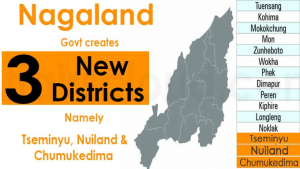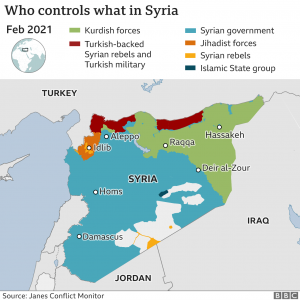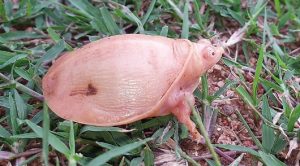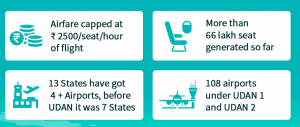THE INDIAN POLITY AND GOVERNANCE
1. NAGALAND CREATES THREE NEW DISTRICTS
THE CONTEXT: Nagaland government has created three new districts in the state, taking the total number of districts to 15.

THE EXPLANATION:
- The Nagaland government established three new districts on Saturday, raising the state’s total number of administrative entities to 15. The new three districts are named- Tseminyu, Nuland, and Chumukedima.
- Nuland and Chumukedima have been formed out of Dimapur district, while the Tseminyu is the sub-division of the Kohima district which has been promoted to a district. Despite requests for new districts from at least 11 tribes, the Cabinet could only consider three of them because some districts are home to only one tribe and cannot be separated.
How are new districts carved?
The power to create new districts or alter or abolish existing districts rests with the State governments. This can either be done through an executive order or by passing a law in the State Assembly. The many States prefer the executive route by simply issuing a notification in the official gazette.
How does it help?
States argue that smaller districts lead to better administration and governance. For example, in 2016, the Assam government issued a notification to upgrade the Majuli sub-division to Majuli district for “administrative expediency”.bdivision under Kohima district, Nagaland,” read a notification issued by the Nagaland government.
Does the Central government have a role to play here?
The Centre has no role to play in the alteration of districts or the creation of new ones. States are free to decide. The Home Ministry comes into the picture when a State wants to change the name of a district or a railway station. The State government’s request is sent to other departments and agencies such as the Ministry of Earth Sciences, Intelligence Bureau, Department of Posts, Geographical Survey of India Sciences and the Railway Ministry seeking clearance. A no-objection certificate may be issued after examining their replies.
What has been the trend?
According to the 2011 Census, there were 593 districts in the country. The Census results showed that between 2001-2011, as many as 46 districts were created by States. Though the 2021 Census is yet to happen, Know India, a website run by the Government of India, says currently there are 718 districts in the country. The surge in number is also due to the bifurcation of Andhra Pradesh into A.P and Telangana in 2014. Telangana at present has 33 districts and A.P has 13 districts.
THE INTERNATIONAL RELATIONS
2. DECADE-OLD CONFLICT IN SYRIA
THE CONTEXT: Underlining that the humanitarian crisis in Syria has not seen significant improvement in recent months, India has called for a nationwide comprehensive ceasefire, saying doing so will help to expand crossline humanitarian aid operations in the country.
THE EXPLANATION:

- At a United Nations Security Council briefing about Syria, India said decade-long conflict and involvement of external players has adversely affected the sovereignty and territorial integrity of Syria.
- “India has been reiterating since the beginning of the conflict that imposing external solutions cannot help in the resolution of the conflict
- On its part, India has continued to extend developmental assistance and human resource development support to Syria through grants and lines of credits for developmental projects, supply of medicine and food, artificial limb fitment camps and capacity building training programs.
- On the security front, India remains concerned with the overall situation in Syria, including the increasing incidents of ceasefire violations in North-West Syria.
- Also, India pointed out, Since the beginning of the conflict, India has always stood by the Syrian people. Reaffirming India’s commitment to a Syrian-led and Syrian-owned UN-facilitated political process in line with UN Security Council Resolution 2254″.
THE BACKGROUND
Syria is a west Asian Country bordering Lebanon, Turkey, Iraq, Jordan, and Israel. The civil war in Syria is regarded as the most brutal conflict in the world which started off in 2011.
The conflict between Shia Islam and Sunni Islam
The root of this conflict can be traced to sectarian conflicts in the region existing there for centuries. Shia Islam and Sunni Islam are the two major denominations of Islam Religion. With Saudi Arabia regarding itself as the leader of Sunni Muslims and Iran as the protector of Shia Muslims, the West Asian region is divided under these two leaders. Saudi and Iran started playing an important role in the geopolitical conflicts in the region.
What caused the uprising?
While lack of freedoms and economic woes drove resentment of the Syrian government, the harsh crackdown on protesters inflamed public anger.
- Arab Spring: In 2011, successful uprisings – that became known as the Arab Spring – toppled Tunisia‘s and Egypt‘s presidents. This gave hope to Syrian pro-democracy activists.
- That March, peaceful protests erupted in Syria as well, after 15 boys were detained and tortured for writing graffiti in support of the Arab Spring. One of the boys, a 13-year-old, was killed after having been brutally tortured.
- The Syrian government, led by President Bashar al-Assad, responded to the protests by killing hundreds of demonstrators and imprisoning many more.
- In July 2011, defectors from the military announced the formation of the Free Syrian Army, a rebel group aiming to overthrow the government, and Syria began to slide into war.
- While the protests in 2011 were mostly non-sectarian, the armed conflict surfaced starker sectarian divisions. Most Syrians are Sunni Muslims, but Syria’s security establishment has long been dominated by members of the Alawi sect, of which Assad is a member.
- In 1982, Bashar’s father ordered a military crackdown on the Muslim Brotherhood in Hama, killing tens of thousands of people and flattening much of the city.
- Even global warming is said to have played a role in sparking the 2011 uprising. Severe drought plagued Syria from 2007-10, causing as many as 1.5 million people to migrate from the countryside into cities, exacerbating poverty and social unrest.
Who are Kurds?
- The Kurds are the world’s largest stateless ethnic group. There are an estimated 25 million to 35 million of them.
- They live in the highlands of southern and eastern Turkey, northern Iraq, northeastern Syria, northwestern Iran, and parts of south Armenia, and are a minority in each of these countries.
- Kurdish nationalists claim a history going back 2,500 years, but they became identifiable as a distinct community only in the 7th century, when most tribes in the area adopted Islam.
- The Treaty of Sèvres (1920), which partitioned the old Ottoman dominions, marked out a much smaller territory as Kurdistan. However, Turkey negotiated with the Allied powers and, in 1923, the Treaty of Lausanne overtook the Treaty of Sèvres and ended the idea of a self-governing Kurdistan.
- Over the decades, the Kurds made repeated attempts at establishing a Kurdistan with defined national borders (within the territory of Turkey), and in this process, Turkey retaliated with massive repression of Kurds.
Why is Turkey invading Syria?
By invading northern Syria, Turkey seeks to create a peace zone, where it can deport Syrian refugees that fled the country during the Civil war in Syria.
However, experts believe in the name of the creation of a peace zone, Turkey wants to land grab the strategic area.
- Geopolitical Importance of northern Syria.
- It holds 30% of Syrian oil & gas.
- This area harbors fertile agricultural land.
- Also, the region is drained by water from the river Euphrates.
- Apart from this, the area is under the control of Kurds, which Turkey recognizes as a threat to its territorial integrity.

|
The Way ahead:
The outside powers that are involved in Syria’s civil war through proxy means need to reconsider their decision. Their role in converting a peaceful democratic movement into full-fledged war should be condemned. They should stop financing the extremist groups to avoid further conflicts in the region.
Considering the large-scale devastation which happened in Syria, rebuilding its human and social capital will be an insurmountable task for the govt. Therefore, the international community should come forward with a helping hand to bring the war-torn nation into normalcy. India can also play a constructive humanitarian role to establish peace and stability in the region.
THE SCIENCE AND TECHNOLOGY
3. PROHIBITION ON USE OF TB ANTIBIOTICS ON CROPS
THE CONTEXT: The Union Ministry of Agriculture and Farmers Welfare notified the draft order on ‘Prohibition of Streptomycin + Tetracycline in agriculture’, which prohibits import, manufacture or formulation of Streptomycin and Tetracycline for use in agriculture from February 1, 2022.
THE EXPLANATION:
- The draft order comes growing concerns over antimicrobial resistance observed in various crops, particularly to streptomycin, which is used in the treatment of tuberculosis (TB). Tetracycline antibiotics find application in the treatment of bacterial infections.
- Streptomycin is a critically important antimicrobial while tetracycline belongs to the class of highly important antimicrobials, according to the World Health Organization.
- The order ensures a complete ban on the use of the two antibiotics in agriculture from January 1, 2024, onwards. It directed every state government to take all such steps necessary for executing the order in their state.
- The draft order is the fallout of the deliberations within the Central Insecticides Board and Registration Committee (CIBRC), where the registration committee (RC) in August 2021 had approved the recommendation for phasing out the use of streptomycin and tetracycline amid growing concerns over antimicrobial resistance (AMR).
Empirical data
- Delhi-based non-profit Centre for Science and Environment (CSE) in 2019 highlighted the practices of antibiotic misuse in the crop sector in India. It showed how streptomycin (90:10 combinations of streptomycin and tetracycline) was being misused along the banks of the Yamuna in national capital Delhi, Hisar (Haryana) and Fazilka (Punjab).
- It found that farmers there routinely and indiscriminately used high doses of streptomycin on crops, including on the ones for which they had not received any approval.
- CSE had recommended these antibiotics should not be used as pesticides, and that they are used under expert supervision only after a bacterial disease has been diagnosed in a crop. It said so underlining the importance of streptomycin use in humans for “previously treated tuberculosis” and for treating multidrug-resistant TB and certain cases of TB meningitis.
- It added that all other antibiotics should be phased out. Since then CSE has been continuously advocating about the issue on various platforms.
What is antimicrobial resistance?
- Antimicrobial Resistance (AMR) occurs when bacteria, viruses, fungi and parasites change over time and no longer respond to medicines making infections harder to treat and increasing the risk of disease spread, severe illness and death.
- As a result of drug resistance, antibiotics and other antimicrobial medicines become ineffective and infections become increasingly difficult or impossible to treat.

For example:
Colistin is the only last resort treatment for life-threatening infections caused by carbapenem-resistant Enterobacteriaceae (i.e. E.coli, Klebsiella, etc). Bacteria resistant to colistin have also been detected in several countries and regions, causing infections for which there is no effective antibiotic treatment at present.
KEY FACTS
|
THE ENVIRONMENT AND ECOLOGY
4. A RARE TURTLE SPECIES FOUND IN SIRNAPALLY FOREST IN TELANGANA
THE CONTEXT: Forest officials from Sirnapalli forest in Telangana spotted a rare Albino flap shell species, researchers later suggested they were traced only twice before in 2020 — once in Odisha and then in West Bengal,
THE EXPLANATION:
About Indian Flapshell turtle

- It is a freshwater species of turtle found in South Asia.
- The “flap-shelled” name stems from the presence of femoral flaps located on the plastron. These flaps of skin cover the limbs when they retract into the shell. It is unclear what protection the flaps offer against predators.
- It is morphologically an evolutionary link between the softshell and hardshell aquatic turtles.
- Habitat: The Indian flap shell turtle is found in Pakistan, India (common in lakes and rivers), Sri Lanka, Nepal, Bangladesh (Indus and Gange’s drainages), and Myanmar (Irrawaddy and Salween Rivers). It has been introduced to the Andaman and Nicobar Islands. It is also found in the desert ponds of Rajasthan, where hundreds are killed every year during the dry summers.
- In 2020 a farmer found a yellow flap shell turtle, believed to be an albino version of the species.
Threat: Exploitation on for-profit and habitat change are threats to their survival.
- Conservation status:
- Appendix- I of CITES
- IUCN – Vulnerable
|
Add to your Knowledge: SC: Possession of ‘Indian Flap Shell Turtle’ not an offense under the Wildlife Protection Act SC said that the Turtle which has been seized is not that which is included in Part II of Schedule I. It stated that the Veterinary Surgeon has identified the Turtle as ‘Indian Flap Shell (Lissemy’s Punctata)’ whereas the Turtle which is included in Part II of Schedule I of the Act, 1972 is “Indian Soft-shelled Turtle (Lissemys punctate).” |
THE GOVERNMENT SCHEMES/INITIATIVES IN NEWS
5. THE PROBLEMS WITHIN THE UDAN SCHEME
THE CONTEXT: Prime Minister launched the UDAN scheme nearly five years back with the aim to take flying to the masses. While over 400 routes have been launched by airlines, some of them have been discontinued.
THE EXPLANATION:

- The MoS stated that this was because of the failure to set up airports due to lack of availability of land, airlines finding the routes difficult to sustain, and the adverse impact of the COVID-19 pandemic.
- The poor financial health of much smaller, regional carriers has been a bane for the scheme.
What is UDAN Scheme:
- The scheme is aimed at enhancing connectivity to remote and regional areas of the country and making air travel affordable.
- It is a key component of the Centre’s National Civil Aviation Policy in 2016.
- Under the scheme, nearly half of the seats in Udan flights are offered at subsidized fares, and the participating carriers are provided a certain amount of viability gap funding (VGF) – an amount shared between the Centre and the concerned states.
- The scheme will be jointly funded by the central government and state governments.
- The scheme will run for 10 years and can be extended thereafter
What is the status of the scheme?
- A total of nine rounds of bidding have taken place since January 2017. The Ministry of Civil Aviation has set a target of operationalizing as many as 100 unserved and underserved airports and starting at least 1,000 RCS routes by 2024.
- So far, the Airports Authority of India (AAI) has awarded 948 routes under UDAN, of which 403 routes have taken off that connect 65 airports, which include eight heliports. Out of the total 28 seaplane routes connecting 14 water aerodromes, only two have commenced.
- While the Ministry of Civil Aviation undertook interesting initiatives within the scheme to provide improved connectivity to hilly regions and islands through helicopters and seaplanes, as well as linking Assam with certain international destinations in South Asia and Southeast Asia, these mostly remain on paper.
What have been the challenges?
- The poor financial health of much smaller, regional carriers has been a bane for the scheme. Financial crunch for maintenance.
- According to Government, they also have problems with the availability of pilots and are forced to hire foreign pilots which costs them a lot of money and makes the business unviable. So far, only those routes that have been bagged by bigger domestic players such as IndiGo and SpiceJet have seen a better success rate”.
- Similarly, the only seaplane flight launched remains suspended. SpiceJet’s seaplane flight from Statue of Unity in Kevadiya to Sabarmati Riverfront in Ahmedabad was launched in October 2020, by the Prime Minister and saw a few flights till April but has since been suspended “due to rise in COVID cases, travel restrictions and keeping passenger safety in mind”.
What lies ahead for the scheme?
The Government offers subsidies for a route for a period of three years and expects the airline to develop the route during this time so that it becomes self-sufficient.
THE PRELIM PRACTICE QUESTION
1. Consider the following statements about World Press Freedom Index:
- It is published annually by Reporters Without Borders.
- In 2021, India was ranked 142nd out of 180 countries.
Which of the statements given above is/are correct?
a) 1 only
b) 2 only
c) Both 1 and 2
d) Neither 1 nor 2
Spread the Word



